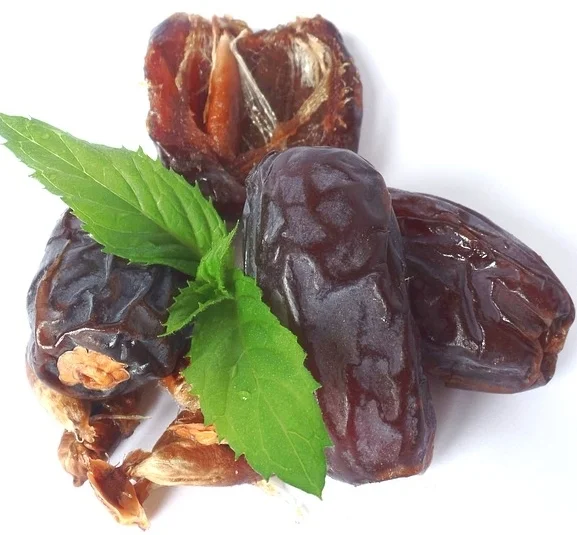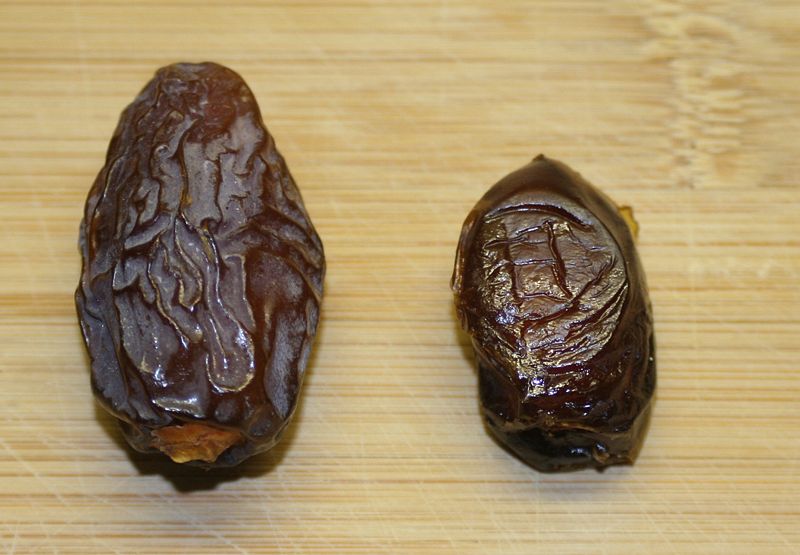Medjool Dates! What are they?
The Medjool date.
The Medjool date comes from Morocco and is also known as the "KING of DATES". It was once reserved only for royalty and their guests.
Medjool history:
Dates have had a significant role in Moroccan cuisine for thousands of years and evidence of their use can be traced back 6000 BC in Arabia. The date palm was also traditionally used, as it is equipped with an abundance of value, including uses of thread, mattresses, lumber, rope and other household and dietary uses.
In Islam the date palm is regarded as The “Tree of Life” as mentioned in the story of Genesis and the dates were eaten ceremoniously at breakfast during Ramadan.
Fasting in Ramadan can be exhausting, and may be accompanied with headaches, low blood sugar, lethargy, hypo-tension and fatigue. The dates are rich in carbohydrates, fibers, sugar, magnesium and potassium and so after a fast can bring back blood sugars levels almost immediately along with helping you feel fuller for longer.
Medjool appearance:
The Medjool date has a deep brown velvety skin with the taste that is unmistakably of caramel. Wrinkly in texture yet plump, when you first bite into it, a Medjool date it is an experience of moist sweet, creamy buttery and almost meaty rich flavours.
The Medjool date is quite popular in Australia and grown in The Northern Territory, South Australia and Queensland. They are in season from April until they are sold out. Look out for them in your local fruit and vegetable markets or at Coles or Woolworths.
The difference between Medjool date and a regular date.
The difference between Medjool dates and regular dates are that they come from different cultivars of the same plant. Medjool dates are picked early in the ripening season when they are soft. Whereas the regular dates, also known as ‘Deglet Noor dates’, fall in the semi-dry category of dates.
The difference in their consistency.
By J.P.Lon - Self-photographed, CC BY-SA 4.0, https://commons.wikimedia.org/w/index.php?curid=3876596
Medjool dates are easier to eat and are quite soft, while regular dates are often soaked in water with a little bicarb before cooking with them.
In terms of nutritional value, Medjool dates are identical to regular dates, however the regular dates have more fiber, fat, and protein.
Medjool for health benefits:
Consuming Medjool dates not only satisfies a sweet tooth but provides vitamins and minerals that are needed to maintain health.
Medjool dates can
1. Help lower LDL cholesterol naturally.
2. Help prevent and relieve constipation.
3. Is a natural energy booster especially for pre-workout snacks or a healthy post-workout option.
4. It helps reduce triglyceride levels.
5. Has antioxidants properties.
6. Boosts healthy bones being high in calcium and phosphorous.
Medjool dates do contain more calories as of their small volume, in contrast to other fruits, as there is less water content. Eating one date contains 66 calories so be mindful of your portion size as it’s a sweet treat to overeat which may lead to weight gain over time.
However, Medjool dates are a fat-free alternative making them a healthier option to fatty desserts when trying to limit your daily fat intake. In addition, dates are not a good source of protein and only contain less than 1 gram per serving.
Medjool serving tips and suggestions:
Medjool dates do not require refrigerating unless of course you have an ant problem, as the ants will quickly work out where they are and eat your delcious delights.
Medjool dates are handy for snacks in lunch boxes and or your GO STAX containers. Their natural sweetness and delicious caramel flavour can satisfy your 3pm slump without turning to chocolate bars or baked goods with your coffee.
They may also be eaten individually or with an apple or plain Greek yoghurt. Sometimes I cut one Medjool date into many pieces and arrange it on some sourdough toast as an alternative to jam.
You could also combine the Medjool dates into smoothies, protein balls and raw desserts as they are great as an alternative to sugar and bind ingredients well, such as pictured below.
This raw beetroot and chocolate mud cake used 8 Medjool dates.
Check out these recipes on the Bard Valley Natural Delights web page
References:
Better Health Channel. (2018). Date. Retrieved from https://www.betterhealth.vic.gov.au/health/ingredientsprofiles/Date
DiMatteo, L. (2009). Quintessentially morocco. Retrieved from https://moroccotravelblog.com/2009/03/31/moroccan-dates-travel-to-morocco-with-these-delicious-date-recipes/
Dr Axe. (2018). Medjool dates: The healthiest natural sweetner? Retrieved from https://draxe.com/medjool-dates/
Gurra Downs. (2018). Field trial date palms. Retrieved from https://www.gurradowns.com.au/field-trial-date-palms
Kannall, E. (2017). Nutritional facts of medjool dates. Retrieved from https://www.livestrong.com/article/289969-nutritional-facts-of-medjool-dates/
Organic Facts. (2018). 9 incredible health benefits of medjool dates. Retrieved from https://www.organicfacts.net/medjool-dates.html






